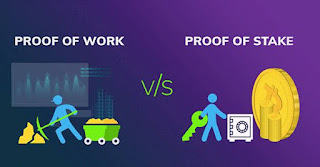Basics of Blockchain Technology
At the heart of the next generation of the World Wide Web lies a beautiful tech, a work of math, a cryptographic and distributed ledger…the blockchain.
First described theoretically in 1991 but was introduced in 2008 to accompany the creation of bitcoin. The blockchain is a distributed ledger maintained by a network of computers known as nodes.
This means that there is no central database but a decentralised database in which participants interact with an identical copy of the supporting database that is distributed over many computers (nodes). This makes the records on the blockchain more secure and immutable.
"Bitcoin gave birth to the blockchain"
A blockchain collects data, records, information and stores them in a group known as a block, when a group or block is filled, a new block is created and linked to the previous block to form a chain. Each block is signed cryptographically to prevent tampering of data in it.
"Okay…at this point you may have many questions but let's stick to the basics"
Let's look at some basic benefits of the blockchain and how it does that;
Decentralisation: Through it's decentralised data storage the blockchain corrects all flaws that accompany a centralised database such as having one point of failure.
All participants in a blockchain have an accurate record of every information and transaction happening on the blockchain therefore it is difficult for one or few participants to tamper with stored data.
Security: Through its distributed nature and cryptographic signatures for every block, the blockchain might be a proof that "math>humans.
Data and transaction records on a blockchain are immune to tampering as any mutation to a record on the blockchain is reflected on all nodes.
To tamper with an information on the blockchain, a majority of the nodes on the blockchain would have to agree to let a node do that which is rare.
Web3: The newest and upcoming iteration of the internet, Web3 is built on the blockchain. It is the technology that powers the Web3, all that Web3 aims at is permissible by blockchain technology. You could say that the blockchain is Web3.
Trust: You may not trust me enough to carry out a million dollar transaction with me, but with the blockchain you do not have to worry about trust. The blockchain automates trust.
The blockchain was created along with bitcoin (a cryptocurrency) in 2008 to solve the problem of "spending" without the need for an intermediary financial institution. Cryptocurrency transactions are able to smoothly function as a result of the blockchain.
There you have it, some benefits that blockchain technology presents us. However, the blockchain also has its problems and I will tell you one. Scalability.
Scalability refers to the ability of a blockchain network to manage an increasing quantity of nodes. A blockchain network while providing decentralisation and adequate security fails to be able to manage increasing quantities of work, or addition of nodes.
This is known as the blockchain trilemma.
In conclusion, technology advancements are made daily to let us have a better world with a better experience. Blockchain technology has been around for over 13 years but it is yet to reach its fullest potential, there is so much more it can do.
I hope to educate you more about the blockchain, Web3 and Crypto industry. Watch for my next articles.
I will like to hear your thoughts and questions about the blockchain in the comments.
Cheers.



Comments
Post a Comment